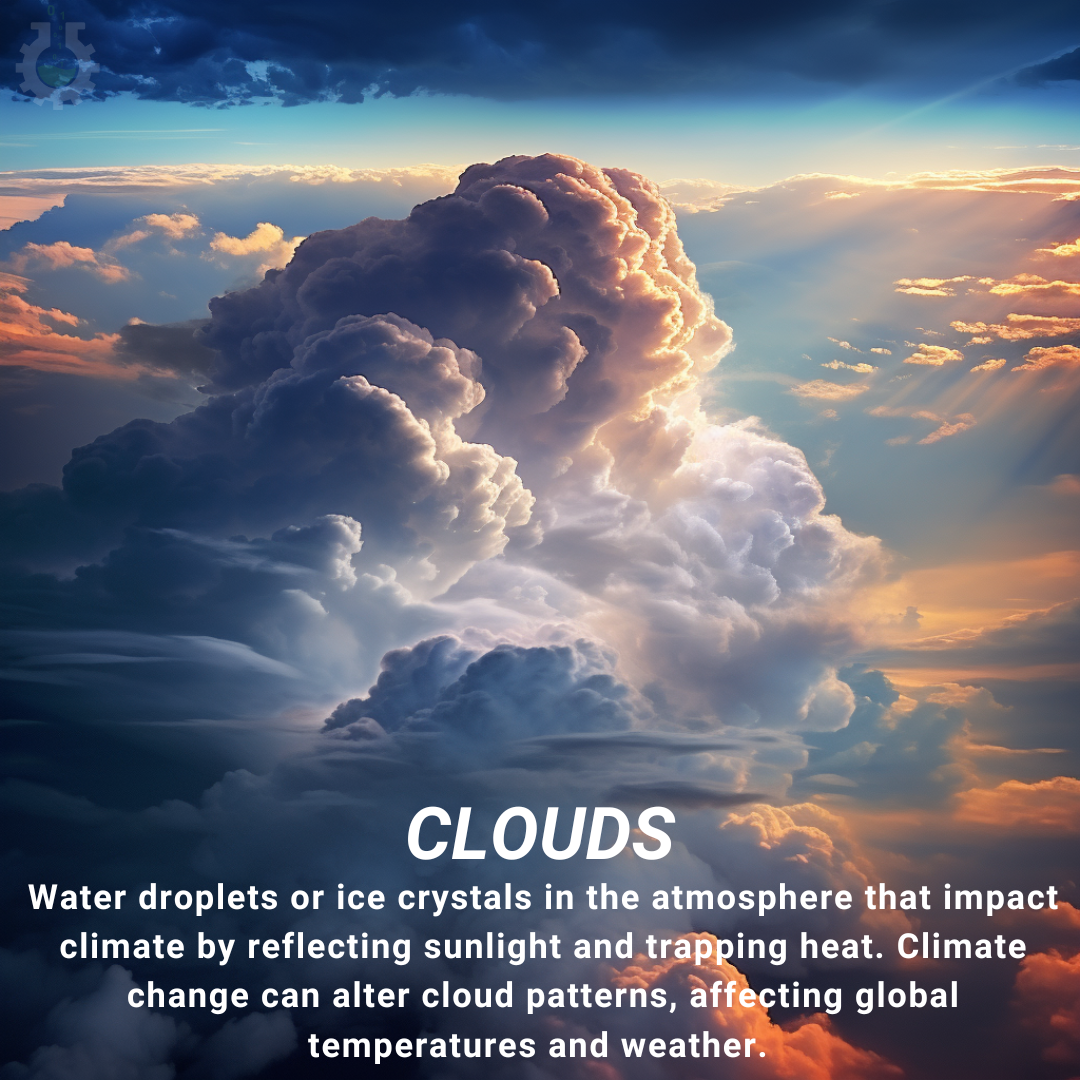October 6, 2023
Climate Change Poster Collection of the Day – Clouds
Book a Demo
Today’s Climate Change Poster Collection highlights the Clouds. play a pivotal role in shaping Earth’s climate by controlling the amount of solar energy that reaches the Earth’s surface and the energy that is reflected back into space. This vital function places them at the core of discussions about global weather patterns and climate change.
The growing concerns over human activities causing climate change have made understanding the energy balance of the Earth’s atmosphere a crucial factor in predicting the impact of these changes. However, the role of clouds is often underestimated in climate models due to our limited knowledge about their energy characteristics and distribution.
Clouds can regulate energy differently based on their altitude, structure, and composition. For instance, some trap heat by reflecting energy back to the surface, while others reflect sunlight, causing the surface to cool. It’s this intricate dance of energy management that helps maintain the balance of our climate.
Global warming is predicted to amplify evaporation rates, leading to increased rainfall and an accelerated water cycle. However, this rise might not be uniformly distributed across the globe, potentially resulting in floods in some regions and droughts in others. This unpredictability underscores the importance of understanding the role of clouds in our climate system.
Recently, an international research team, including Professor Daniel Cziczo from Purdue University, has been studying the effects of both natural and human-made particles on precipitation and climate change. Their research shines a light on how human activities can influence cloud formation.
The team’s research has revealed that particle and gas emissions from human activities can instigate the formation of ice in the clouds, creating a cooling effect. This finding is significant as it shows how human activities can directly and indirectly affect the climate.
Their study also found that secondary organic particles can aid in the formation of cirrus clouds. These are high-altitude clouds that can trap some heat and have more of a warming effect than a cooling effect.
Understanding the role of clouds in climate change is critical for predicting and managing the potential impacts of human activity on climate. The research being undertaken by international teams, including that of Professor Cziczo, is paving the way for this understanding and highlighting the intricate balance of our climate system.
Discover an inspiring collection of climate change posters.



